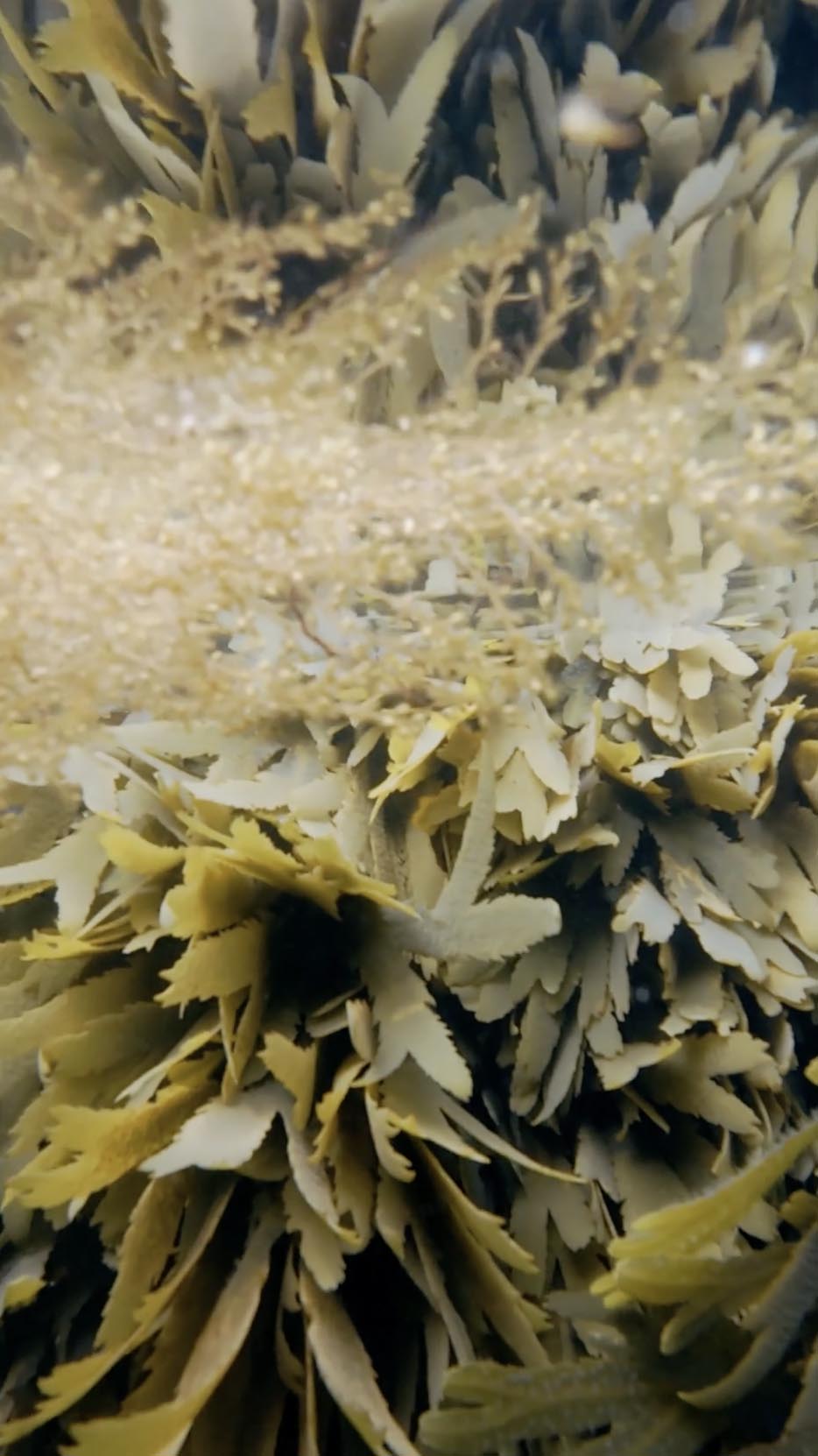
Seaweed in the summer months
How the warmer seasons have an impact on seaweed growth.
After beocming aware of the changing physical appearance of seaweed throughout the seasons, we asked oursleves what happens under the surface? Why does Kelp, in particular, attract other seaweeds to grow on its blades, and why does it weather at the edges? We have compilled a few points below that may provide some of the answers.
1. Kelp’s Annual Growth Cycle
Kelp in UK waters grows most actively during the colder, nutrient-rich months of late autumn through spring. By summer, its growth slows, and the fronds are older. Older tissue is more likely to have tiny surface irregularities and micro-damage that make it easier for other organisms to attach.
By August, you’re often looking at kelp blades that are many months old, giving other seaweeds plenty of time to move in.
2. Warmer Water Favors Epiphytes
Late summer sea temperatures in the UK (though still cool compared to tropical seas) are at their warmest. Many smaller red and green seaweeds, such as Polysiphonia or Ulva species, flourish in these conditions and use kelp fronds as a convenient substrate. These epiphytes don’t parasitise kelp directly, but they compete for sunlight and can weigh down fronds.
3. Light and Nutrient Changes
Spring and early summer bring long daylight hours and, in coastal waters, pulses of nutrients from winter mixing and spring blooms. By mid-to-late summer, nutrient levels in the water often decline, especially nitrogen. Kelp fronds, already mature, can start to thin and degrade at the edges. Opportunistic species with low nutrient demands (including some filamentous reds) can then establish themselves on kelp surfaces.
4. Seasonal Life Cycles of Other Seaweeds
Many seaweed species have life cycles timed for late spring or summer reproduction. Tiny spores settle in large numbers on whatever stable surfaces are available — and mature kelp fronds are prime real estate. This is why you’ll see a sudden uptick in “fuzzy” or “bushy” growths on kelp in August and September.
5. More Marine Life Means More Biofouling
Late summer also brings an increase in other fouling organisms like bryozoans, hydroids, and small tube-dwelling worms. These organisms can colonise kelp blades alongside or even underneath seaweed epiphytes, making the fronds rough, brittle, and less appealing for harvest.
So, what does this mean and why is it important for people to learn about? Because the implications relate to everyone who wants to harvest seaweed for themsleves, in a safe and sustainable way.
For the cleanest, most tender kelp, harvesting in late winter to early spring is ideal. By then, new growth is fresh and largely free of hitchhikers. Harvesting later in summer means you may spend more time cleaning your seaweed — or you might choose to focus on other species that peak in summer instead, such as certain edible greens.
In essence:
Kelp is a living surface in a busy coastal ecosystem. By late summer, it becomes a floating community — beautiful in its own right, but not always the best for foraging. However, choosing areas with less light, under the top canopy and covered can still herrald areas for harvesting.